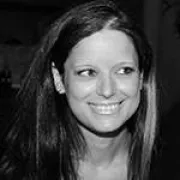I try to tell the different stories of Iranian women, which is somehow my own story too. I want to show a woman from different points of view.
Ever since its invention in the 19th century, photography has documented life. At the same time, it focuses on inviting audiences to a rather subjective world while trying to be taken seriously as an art form. Photography has always been considered a male-dominated profession, but luckily, things are changing. Scholars, writers, bloggers, photography students, and enthusiasts have been giving due to the female pioneers of the field. Most were always standing and/or hiding in the shadows, oblivious to how much they could claim and accomplish. Arguably, the techniques, concepts, and themes female photographers use differ from those of male photographers. At a time when most women were convinced that their place was in the kitchen and certainly not in the dark room, some were struggling to surpass their male counterparts and work towards gaining respect and recognition for their work.

Shadi Ghadirian (Iranian photographer, 1974-) graduated from high school in 1988 and then studied Art and Photography at Azad University in Tehran (now Islamic Azad University, Central Tehran Branch). She received her B.A. in Photography and started exhibiting her work in 1999.
She is a contemporary photographer whose work is influenced by her experiences as a Muslim woman living in contemporary Iran. Her work also relates to the lives of women throughout the world.
Through her work, she critically comments on the pushes and pulls between tradition and modernity for women living in Iran, as well as other contradictions that exist in everyday life. She explores the topics of censorship, religion, modernity, and the status of women. Ghadirian gained international recognition through the series Qajar and Like Everyday in 1998 and 2001.
In Qajar, the artist arranged portraits of women, mainly her friends and family, using backdrops and dresses reminiscent of the Qajar era (1785-1925), but added contemporary Western props such as a boom box, a Pepsi can, a phone, or a vacuum. Portraits taken during the Qajar period were traditionally captured in a formal setting, and the subject often posed with prized possessions and objects that pointed to elite status. This juxtaposition of the traditional and the contemporaneous served as a starting point for a later series that further developed around the theme of contradiction in everyday life in contemporary Iran.
In Like Everyday, Shadi replaces the expected monotone of the black chador with vibrantly patterned fabrics, while each portrait suggests a vivacious individuality and character, belying the limitations of stereotype. Similarly, mundane objects, when transformed into faces, become highly poised and charismatic caricatures, embodying individual personalities.
Shadi Ghadirian has produced various photographic series to date, including Unfocused (1998), Be Colorful (2002), West by East (2004), Ctrl+Alt+Del (2006), Nil Nil (2008), Miss Butterfly (2011), Too Loud a Solitude (2014), and more. These series attempt to work through and reveal the issues that women face living in contemporary Iran while also bringing to light the complexities of negative stereotypes that these same women face coming from abroad.
In addition to focusing on individual projects, Ghadirian also works at the Museum of Photography in Tehran. Her first involvement in group exhibitions, Group Exhibition (About Children) at Aria Gallery and Tehran International Documentary Photo Exhibition, both took place in Tehran in 1997. Since then, the photographer has taken part in a diverse collection of group exhibitions all over Europe, North and South America, Northern Africa, Asia, and Australia, as well as exhibitions in Iran and the Middle East. Her work has appeared at the Venice Biennale (2015) and many other prominent biennials and galleries. Her first solo exhibitions were at Golestan Gallery in Tehran and Leighton House Museum in London, both in 1999.
Since then, Ghadirian has held solo exhibitions all over the world, mostly in Europe, North America, and the Middle East. Her work exists in public collections at The British Museum and The Victoria and Albert Museum in London, the Centre Georges-Pompidou in Paris, the LACMA in California, The Smithsonian Museum in Washington, DC, the Museum of Fine Arts in Boston, the Mumok in Vienna, Musée d'Art et d'Archéologie in Aurillac, the Devi Art Foundation in Gurgaon, and the Museum of Contemporary Art in Tehran. In 1995, Ghadirian won a competition for a photograph from her Qajar series depicting two women in hijabs holding a mirror reflecting banned books on a shelf. However, the Ministry of Culture in Iran called the photograph "too contentious", and her piece was disqualified from the competition. For this, The Guardian deems her a "rule breaker".
On February 4, 2009, The Guardian named Ghadirian Artist of the Week 27. Because Ghadirian works, lives, and exhibits in Iran, she tackles controversial issues through creative means. She cannot photograph a woman's hair or any physical contact between men and women. Instead, she uses humor and parody to investigate the paradoxes of Iranian women's lives and the tensions between tradition and modernity.

The photographs depict conscious choices made by these women; an act of rebellion, of subtlety, of changes foreseen.

We will continue talking about female names that left their mark on photography and about contemporary female photographers who are still emerging. There are a lot of female photographers out there deserving of praise, and we can only hope to cover as many of them as we can. Please follow this space to find out more.







